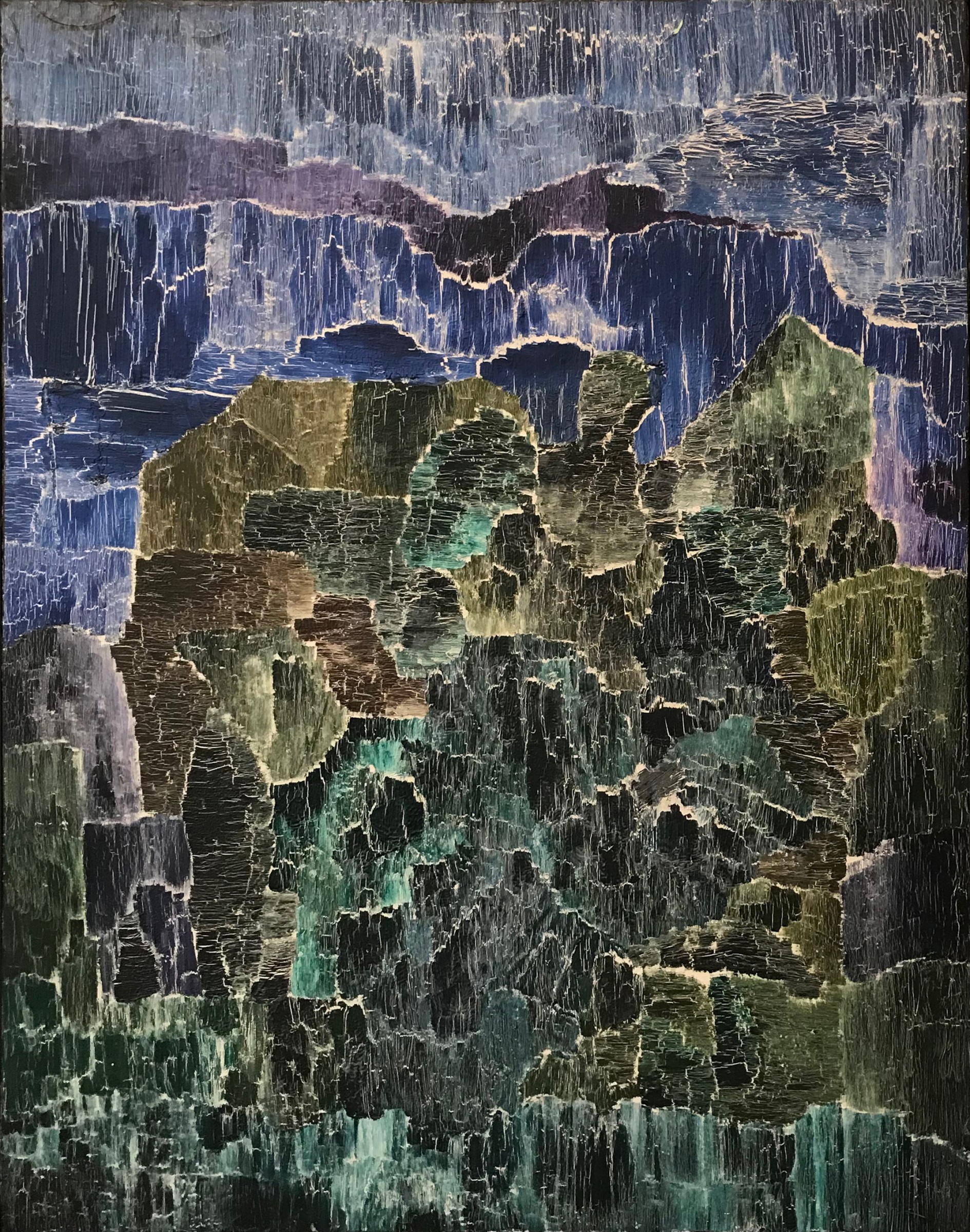Siegfried Laske
Perù, 1931 - 2012
Laske stands out for his mastery of the craquelure technique, a specific process of canvas preparation. However, his body of work is much broader. According to critics Jorge Villacorta and Luis Eduardo Wuffarden:
"The first thing that surprises when revisiting Laske's professional trajectory is the constant fluctuation over time. The artist evolves from figuration with social themes to pure abstraction laden with meanings and from there to South American or Mediterranean landscapes, only to return to a non-figurative matrix that, in turn, paves the way for new forms of representation. All these changes, however, constitute diverse moments in the evolution of a coherent perspective."
"The first thing that surprises when revisiting Laske's professional trajectory is the constant fluctuation over time. The artist evolves from figuration with social themes to pure abstraction laden with meanings and from there to South American or Mediterranean landscapes, only to return to a non-figurative matrix that, in turn, paves the way for new forms of representation. All these changes, however, constitute diverse moments in the evolution of a coherent perspective."
Siegfried Laske grew up in the Miraflores district of Lima. Alongside Julio Ramón Ribeyro and Emilio Rodriguez Larraín, he attended Champagnat College. At an early age, Laske studied at the School of Fine Arts in Lima. In addition to immersing himself in local controversies surrounding abstraction and indigenism in painting, Laske trained in various classical techniques.
After two stays in Argentina and Brazil, and his first exhibition in Lima in 1951, Laske obtained a scholarship to further his artistic education in Italy. He traveled there in 1955 and discovered the works of European painters such as Cézanne, Picasso, Matisse, and Klee, who would influence his painting, particularly in his approach to color. In 1956, Laske settled permanently in Paris.
Marked by a strong left-wing political commitment, Laske associated with many artists and intellectuals of his generation in France who, like him, came from Peru attracted to Europe: Alfredo Ruiz Rosas, Julio Ramón Ribeyro, Jorge Piqueras, Michel Grau, the brothers Max and Herman Braun-Vega, Luis Loayza, and others. From the 1970s onwards, Laske's artistic production found success in the Italian art market. In the following decade of the 1980s, this success continued in Peru, where Laske accumulated exhibitions in prestigious institutions. However, the political instability of the subsequent decade, with the Shining Path and the government of Alberto Fujimori, as well as the rise of contemporary art, tended to limit his presence and prompted his retreat to France. In June 2014, the North American Peruvian Cultural Institute (ICPNA) organized a retrospective exhibition of the painter's work.
After two stays in Argentina and Brazil, and his first exhibition in Lima in 1951, Laske obtained a scholarship to further his artistic education in Italy. He traveled there in 1955 and discovered the works of European painters such as Cézanne, Picasso, Matisse, and Klee, who would influence his painting, particularly in his approach to color. In 1956, Laske settled permanently in Paris.
Marked by a strong left-wing political commitment, Laske associated with many artists and intellectuals of his generation in France who, like him, came from Peru attracted to Europe: Alfredo Ruiz Rosas, Julio Ramón Ribeyro, Jorge Piqueras, Michel Grau, the brothers Max and Herman Braun-Vega, Luis Loayza, and others. From the 1970s onwards, Laske's artistic production found success in the Italian art market. In the following decade of the 1980s, this success continued in Peru, where Laske accumulated exhibitions in prestigious institutions. However, the political instability of the subsequent decade, with the Shining Path and the government of Alberto Fujimori, as well as the rise of contemporary art, tended to limit his presence and prompted his retreat to France. In June 2014, the North American Peruvian Cultural Institute (ICPNA) organized a retrospective exhibition of the painter's work.
